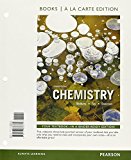
PROBLEM 6.19 An ionic liquid consisting of a bulky
F−, Se2−, O2−, and Br−.
(a) Write the electron configuration for each of these ions.
(b) Which ions are isoelectronic?
(c) Which ion is the best choice for replacing the chloride ion to make an ionic liquid with a lower melting temperature?
Want to see the full answer?
Check out a sample textbook solution
Chapter 6 Solutions
Chemistry, Books a la Carte Edition and Modified Mastering Chemistry with Pearson eText & ValuePack Access Card (7th Edition)
- 12:05 Question 6 of 17 Submit Which of the following series of isoelectronic ions (Mg2", N°, F, Si**) has the ionic radii in order of largest to smallest? A) Mg2* > N3- > F > Si* B) Mg2* > Si** > F¯ > N³- C) N3- > F> Si** > Mg2* D) N3- > F > Mg2* > Si** E) F> N3- > Si** > Mg2* Tap here or pull up for additional resourcesarrow_forward6) 7) 8) 9) 10) CF4 + HCN + GaF3 + SrS + N₂ + Br2 → CUSO4 → Cs → PtF₂ → H₂ → CBr4 + CsF + H₂SO4 + SrF₂ + NH3 F2 Ga PtS Cu (CN)2arrow_forwardDraw the electron dot formula for each of the following elements: (a) Si (b)Xearrow_forward
- 2) (Tinoco 6.12) One of the important factors responsible for geologic evolution is the pres- sure developed by the freezing of water trapped in enclosed spaces in rock formations. What is the pressure of this trapped water at -10°C assuming that ice and liquid water are at equilibrium? The densities of ice and liquid water at -10°C may be taken as 0.92 and 1.00 g mL-1, respectively.arrow_forwardWhich one in each pair has the larger radius ? Explain. (a) a magnesium ion or an aluminum ion (b) a sodium atom or a silicon atom (c) a potassium ion or bromide ionarrow_forwardAn atomic cation with a charge of +1 has the following electron configuration: 1s 252p°3s23p°3d 4s' 6. .6 What is the chemical symbol for the ion? How many electrons does the ion have? How many ls electrons are in the ion?arrow_forward
- Arrange the following ions in order of increasing ionic radius: calcium ion, potassium ion, phosphide ion, chloride ion from smallest to largestarrow_forward(b) A new element, "X", is discovered and found to have 2 electrons in its outer level. Is X a metal or non-metal? Predict the formula its ion would have in any ionic compounds it forms.arrow_forwardWhat is the reason why N has a larger atomic radius than F ? (A) N has a larger atomic number (B) Z_("eff ") increases in F compared to N (C) F has a larger ionization energy (D) electronegativity increases in F compared to N (E) electron screening in F increases compared to Narrow_forward
- How many of the following atoms or ions have spherically symmetric total electron density? F-, Na, Si, S2-, Ar+, Ni, Cu, Mo, Rh, Sb, W, Au (a) 4 (b) 5 (c) 6 (d) 7 (e) 8arrow_forwardJudging from their relative positions in the Periodic Table, which element in each set is more electronegative? Q.) Lithium or potassiumarrow_forward7) The Figure 1 in the image shows the variation of ionisation energy, which increases across the periodic table. Account for the anomaly observed in groups 3A and 6A. (8) (8) Using specific examples, explain why atoms are distributed at strange angles in some moleculesarrow_forward
 ChemistryChemistryISBN:9781305957404Author:Steven S. Zumdahl, Susan A. Zumdahl, Donald J. DeCostePublisher:Cengage Learning
ChemistryChemistryISBN:9781305957404Author:Steven S. Zumdahl, Susan A. Zumdahl, Donald J. DeCostePublisher:Cengage Learning ChemistryChemistryISBN:9781259911156Author:Raymond Chang Dr., Jason Overby ProfessorPublisher:McGraw-Hill Education
ChemistryChemistryISBN:9781259911156Author:Raymond Chang Dr., Jason Overby ProfessorPublisher:McGraw-Hill Education Principles of Instrumental AnalysisChemistryISBN:9781305577213Author:Douglas A. Skoog, F. James Holler, Stanley R. CrouchPublisher:Cengage Learning
Principles of Instrumental AnalysisChemistryISBN:9781305577213Author:Douglas A. Skoog, F. James Holler, Stanley R. CrouchPublisher:Cengage Learning Organic ChemistryChemistryISBN:9780078021558Author:Janice Gorzynski Smith Dr.Publisher:McGraw-Hill Education
Organic ChemistryChemistryISBN:9780078021558Author:Janice Gorzynski Smith Dr.Publisher:McGraw-Hill Education Chemistry: Principles and ReactionsChemistryISBN:9781305079373Author:William L. Masterton, Cecile N. HurleyPublisher:Cengage Learning
Chemistry: Principles and ReactionsChemistryISBN:9781305079373Author:William L. Masterton, Cecile N. HurleyPublisher:Cengage Learning Elementary Principles of Chemical Processes, Bind...ChemistryISBN:9781118431221Author:Richard M. Felder, Ronald W. Rousseau, Lisa G. BullardPublisher:WILEY
Elementary Principles of Chemical Processes, Bind...ChemistryISBN:9781118431221Author:Richard M. Felder, Ronald W. Rousseau, Lisa G. BullardPublisher:WILEY





